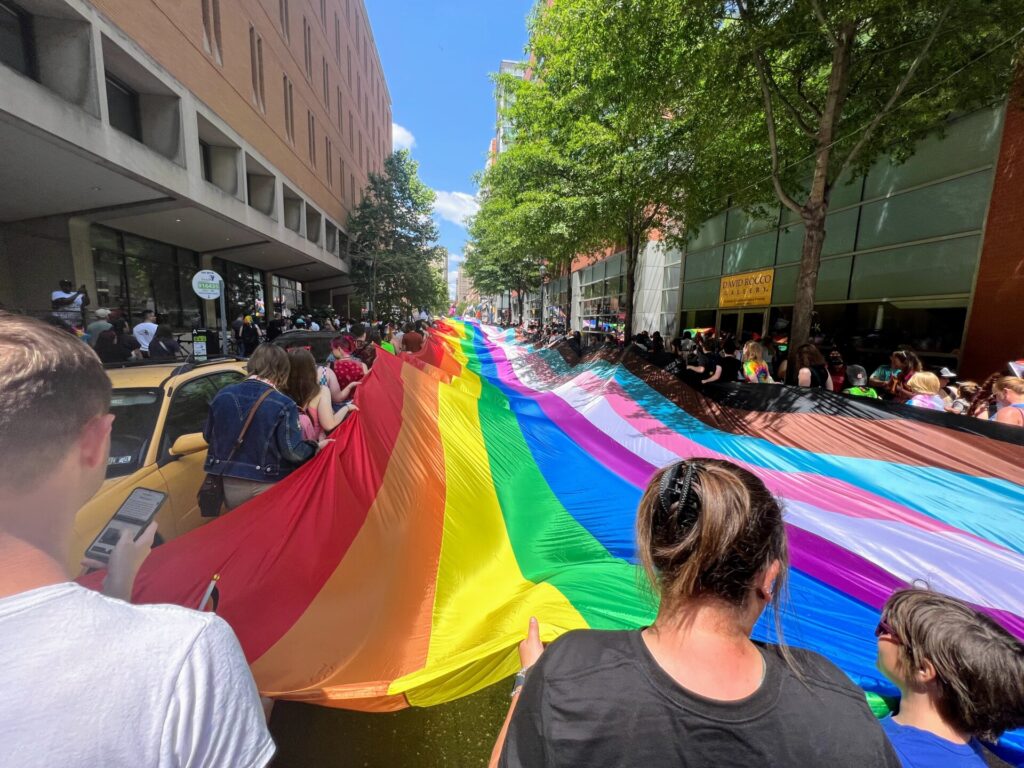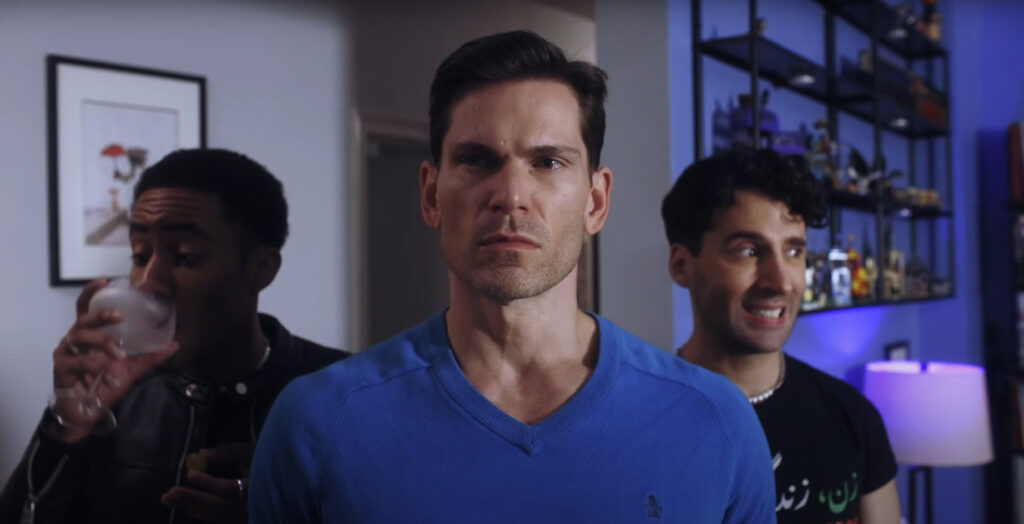As told to Alejandro Morales.
The entirety of SAGA takes place from 1982 to around 1985. I grew up in the 80’s and early 90’s, in the AZT era of the HIV/AIDS crisis. My health class was in terror of it. We watched Philadelphia. And I imagined, if I had been born a few years earlier, I might have been dead or watching my friends dying around me. And that’s something I wanted to explore, theatrically.
One thing that interested me about the AIDS crisis in the 80s was the other side, the evangelists, who thought homosexuality was wrong and evil. And what a great argument they had, with AIDS. They could say God was punishing you. People like Jerry Falwell and Pat Robertson said, look, they’re getting their just desserts. And this is the time before the internet, so people didn’t know everything. A lot of people didn’t understand homosexuality.
Another thing about the 80s that I remember, from being a child, watching cartoons and movies, was that the entertainment was exaggerated. The loud colors, the fashion… and Rocky IV. That was one of my favorite musical comedies. It was so over the top. The American champion gets a standing ovation by the premiere of Russia, during the cold war, with the very real threat of a nuclear holocaust. And I’m like, this is a comedy. There was a lot going on during that time that was scary, and it was extreme, and the art of the time reflected that.
SAGA is also based loosely on “Der Ring des Nibelunge” opera tetralogy. It’s four operas that came out in the mid-19th century. Put together, they’re between 16 and 20 hours of opera, based on Nordic myths, the same myths that also appear in the Lord of the Rings trilogy: There’s magic gold in the Rhine river and this dwarf renounces his love so he can claim it, and he forges it into a ring that has the power to rule the world, but then the gods take it away. It causes all this trouble.
A part of the Nordic legeng that I applied to SAGA is the Ragnarok, the apocalypse story. The thing I love about the Nordic apocalypse versus the Christian one, is that in the Nordic apocalypse, it destroys the world of men and the gods, but there’s a rebirth. Things are born again out of the destruction. Everything is so cyclical in that mythology. Even the ring itself is a circle. So I applied that to the devastation that was threatening to occur in the 80s.
Writing “Coming: A Rock Musical of Biblical Proportions” was quick. It took me five days. It poured out. SAGA did not. I stepped away from it a lot, I threw away a lot of things. A lot of the songs have been moved, so at times it’s been chronological, at times it’s been flash-backs, at times the chronology doesn’t matter. With “Coming…”, I had a draft, I finished the draft and then the revisions came. This one I improvised as I went. “Coming…” was easier, and much less complicated. It certainly has a lot of the same themes, but where “Coming…” came from Christian mythology, SAGA comes from Nordic mythology. Another similarity with “Coming…” is that my character in SAGA is also a rock star.
I’ve worked with Greg Giovanni, the director and dramaturge of SAGA, before. My breakout role in Philadelphia was BRAT Productions’ “Naked Cocktail,” which Giovanni wrote. He’s someone I like and respect, and he was someone on the team who had actually lived through the time that I was trying to evoke. I was glad to have him on board.
It’s a very young cast. We have a lot of recent graduates and current college students from U. Arts and Temple represented. One of the things that I like about writing theater, is how an actor can say a line and make it mean something that didn’t occur to me consciously when I wrote it. I love the collaborative aspect.
I think that the character I’m playing, Aleric, is more of an introverted, brooding rock star than Damien (from “Coming…”), inspired by people like Boy George and Klaus Nomi. He’s a gay man who had a lover in Germany who died early in the AIDS crisis. He went back to his lover’s grave along the Rhine to apologize and then kill himself, and there’s this magical scene that unfolds with the mythic ring. So then he achieves fame as a rock star, meets a beautiful young bad boy who ends up joining his team, and they go on tour together.
With the concert reading of SAGA, people can expect to see an ambitious work in progress. I’m told that the music is catchy. The cast is sexy, they have great voices. There are moments of comedy and magic, though this is a darker show. There are a lot of serious moments. It was depressing time, even with all those bright colors. I really want people to look at the era, where things were on the verge of changing, and look at where we are now because of the choices that were made.
SAGA: The Rock Opera concert reading will run June 20th, 22nd, and 23rd at L’etage. Tickets are available through BRAT Productions’ website.






